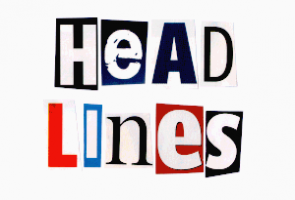The importance of a good headline has been understood far longer than the internet has even been a thing. We’ve all seen in the movies where the newsboy heralds the day’s headline in an effort to sell papers. Well, the power of the headline hasn’t diminished at all since. It is still responsible for hitting the right triggers in people’s brains and causing them to make buying decisions. This is why the health of your headlines is so important – they can make the difference between someone viewing your page clicking through or clicking away.
The Psychology of the Headline
Good headlines are little more than a well-played mind game. They exist for the purpose of making people feel informed and educated but also curious to know more. It’s that secret recipe that many marketers get wrong. They use hackneyed words and phrases, and they use the same adjectives over and over again. It’s time to unlearn that way of writing headlines.
People have become too conditioned to hearing the same type of delivery with the same type of language. Modern headlines have to grab readers’ attention immediately, without the benefit of a newsboy making sure they hear the message. That means that the right headline is one that speaks directly to the brain and instantly creates a specific picture. That picture can be of a thing or just a concept, but it has to get in there and get to work before the brain responds with “I’m not interested in this.”
With that in mind, here are a few tips that you can use to improve the health of your headlines and motivate more people to take whatever action you hope will be elicited through the headline.
#1 – Give the Reader Control
If you market a product or service that has already made the rounds, you need to figure out a way to frame your headlines so that the concept sounds unique. Avoid using too many overused adjectives like “amazing” and “awesome.” To the reader, the degree of amazing and/or awesome remains to be determined. The best headlines are those that involve the reader. Take these two examples:
Example A: “Awesome New Weight-Loss Formula Burns Fat in Hours”
Example B: “Can You Really Start Burning Unwanted Fat in a Matter of Hours?”
The simple inclusion of “you” makes the headline about the reader, not the product. This is so important a concept these days I have to restrain myself from getting any further into it in this article. I could probably go on for hours giving real-world examples of ad campaigns that did a complete 180 based on shifting emphasis away from the product onto the user in headlines.
#2 – Jab the Pain
It is the single most effective marketing strategy: the problem and the solution. Mention the problem in your headline and, if you’ve researched your ideal buyer adequately, you should be able to hit enough nerves to get those clicks. Let’s look at the above example and see how the message shifts when you add a pain point:
“Proven Fail-Proof Weight Loss Formula – Lose Fat and Inches Instantly”
This headline plays to the idea of, “I’ve tried everything already.” It identifies people who have failed to lose weight in other ways. It’s subtle, but it hints that this is an actual solution and not just another in a sea of options.
#3 – Plant Your CTA in Your Headline
An alarming number of people will never read anything but your headline, no matter how brilliant the copy is. With that said, your copy still has to be good. People notice when it isn’t even if they aren’t consciously focusing on it. That’s why I always recommend working with a copywriting company that can deliver copy that compliments and works well with the message in your headline.
Still, when you consider that most people won’t ever read the meat of your article or sales letter, it’s often a good idea to elicit some form of action in the headline. In this instance, our headline might look something like this:
“Burn Away Fat and Inches in Hours – Learn How Here”
I recommend that when using this method there is always some sort of button or link to click that is visible above the fold. Readers’ eyes will gravitate to it, and the likelihood of them clicking through without reading another word is high.
Decisions… Decisions…
“All right, then, which of these methods should I use?”
The answer is simple (and if you read this blog regularly, you know what phrase is waiting on deck here): It depends. This is why I also always recommend having multiple variations and split testing to see which method clicks with your audience. There is no scientific formula here – it’s all about trial and error. The good news is that if you commit to trying all of them, chances are you’ll start seeing patterns and can then tailor your message to the exact audience your brand attracts.
